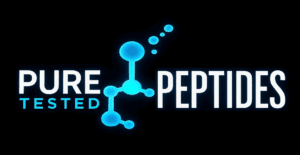Skin & Matrix Biology: Copper Tripeptide Signaling and ECM Programs
Research-Only: Bench use; no medical claims.
GHK-Cu. The glycyl-L-histidyl-L-lysine copper complex is reported to modulate gene expression linked to collagen/elastin synthesis, angiogenesis, and antioxidant defense in fibroblast and tissue models (PMC: PMC6073405; PubMed: 29986520). Broader analyses show remodeling effects and integrin pathway engagement across dermal and pulmonary fibroblasts (PMC: PMC4508379; PMC: PMC5332963; PMC: PMC3359723).
Experimental Readouts. In vitro designs often quantify pro-collagen transcripts (e.g., COL1A1), MMP/TIMP ratios, and oxidative-stress markers. Blend formulations in research settings allow multiplexed interrogation of matrix and recovery endpoints. Browse the full catalog.

Methodological Notes. To contextualize mechanistic observations, laboratories typically
report experimental temperature, buffer composition, biological replicates, and blinding/randomization
practices for image analysis and Western quantification. Where possible, orthogonal corroboration is
included: for example, receptor pharmacology by radioligand binding or BRET assays combined with
downstream second messengers; structural endpoints by both live-cell imaging and fixed immunostaining;
and bioenergetics readouts by oxygen consumption/ECAR coupled to targeted metabolomics. These practices
increase reproducibility and allow meaningful comparison across peptide classes and batches in research-only
settings (PMC: PMC7350483).
Statistics & Reporting. Typical analyses include power calculations, pre-registered endpoints,
and multiple-comparisons adjustments for families of tests. Effect-size reporting (Cohen’s d or Hedges’ g),
confidence intervals, and transparent outlier policies enable precise interpretation of receptor- or
mitochondria-targeted peptide experiments. Collectively, these design elements improve the signal-to-noise
ratio in bench studies and inform subsequent assay selection. Browse the full catalog.
Methodological Notes. To contextualize mechanistic observations, laboratories typically
report experimental temperature, buffer composition, biological replicates, and blinding/randomization
practices for image analysis and Western quantification. Where possible, orthogonal corroboration is
included: for example, receptor pharmacology by radioligand binding or BRET assays combined with
downstream second messengers; structural endpoints by both live-cell imaging and fixed immunostaining;
and bioenergetics readouts by oxygen consumption/ECAR coupled to targeted metabolomics. These practices
increase reproducibility and allow meaningful comparison across peptide classes and batches in research-only
settings (PMC: PMC7350483).
Statistics & Reporting. Typical analyses include power calculations, pre-registered endpoints,
and multiple-comparisons adjustments for families of tests. Effect-size reporting (Cohen’s d or Hedges’ g),
confidence intervals, and transparent outlier policies enable precise interpretation of receptor- or
mitochondria-targeted peptide experiments. Collectively, these design elements improve the signal-to-noise
ratio in bench studies and inform subsequent assay selection. Browse the full catalog.
